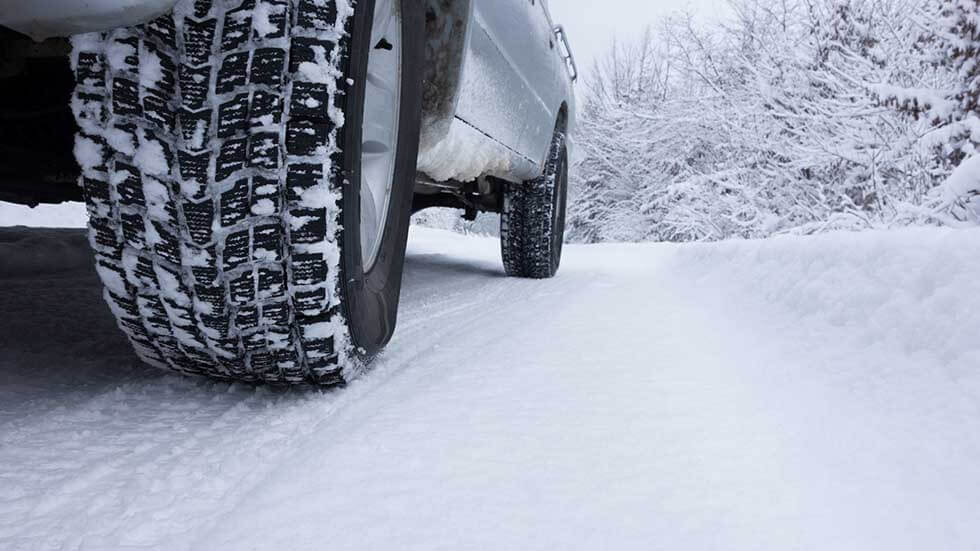If you're someone who lives in an area that doesn't experience extreme winter weather, but you do experience freezing cold temps and the occasional accumulations of snow over winter months, you may sometimes wonder whether you should invest in a set of winter tires for your vehicle.
You may also have heard people use the terms "winter tires" or "snow tires" and wonder if they’re the same thing. While these terms are often used interchangeably, it's important to know that there are subtle differences between the two.

When you see the mountain with a snowflake symbol on the sidewall of a tire, you know that it has met specific snow traction requirements set by the U.S. Tire Manufacturers Association and Rubber Association of Canada and is a true “snow tire.” Tires that earn this symbol have met or exceeded straight-line traction benchmarks in order to do so. This symbol indicates improved traction on packed snow, however it is only an indicator that straight-line traction standards have been met in snow and qualify it for the status of “snow tire”. It doesn’t serve as an indicator of cornering traction or handling. That said, if you live in a location that accumulates enough packed snow to merit tires with this symbol on them, chances are you've never wondered if you need to invest in a set, you always have.
Winter tires, while not earning this symbol, still provide improved traction in adverse winter conditions. They’re engineered to perform better across all winter conditions, not just snow and ice, and they outperform all-season and summer tires in these conditions considerably. Tests conducted by Tire Rack showed a 35% improvement in braking with winter tires vs standard all-season varieties.
The main difference between winter and all-season or summer tires is that the tread remains more flexible as temperatures drop below 45 degrees. This means they're less likely to skid over the surface of the road during turning, braking, or acceleration, and give you more control over your vehicle.
Some believe that because their vehicles come equipped with antilock brakes (ABS) or traction control systems, they have no need for winter tires. It’s true that these systems do assist drivers in controlling their cars or trucks, however they don’t eliminate the usefulness of winter tires. Your tires, after all, are the only part on your car that deliver traction to the surface of the road. A better way to think about these systems is that their performance directly relates to the quality of the traction your tires provide them to do their jobs.
So, should you invest in winter tires? That’s not a cut-and-dry question and will depend largely on your own comfort driving in cold weather, but if you live in an area where average temperatures drop below 45 degrees Fahrenheit, it would be wise to invest in a set of winter tires. Although they may be an added expense you'll need to budget for, in the long run they could wind up saving you money. Not only will the added safety protect against collisions or accidents, but they will give your all-weather or summer tires a rest during winter months, extending their life considerably.
















